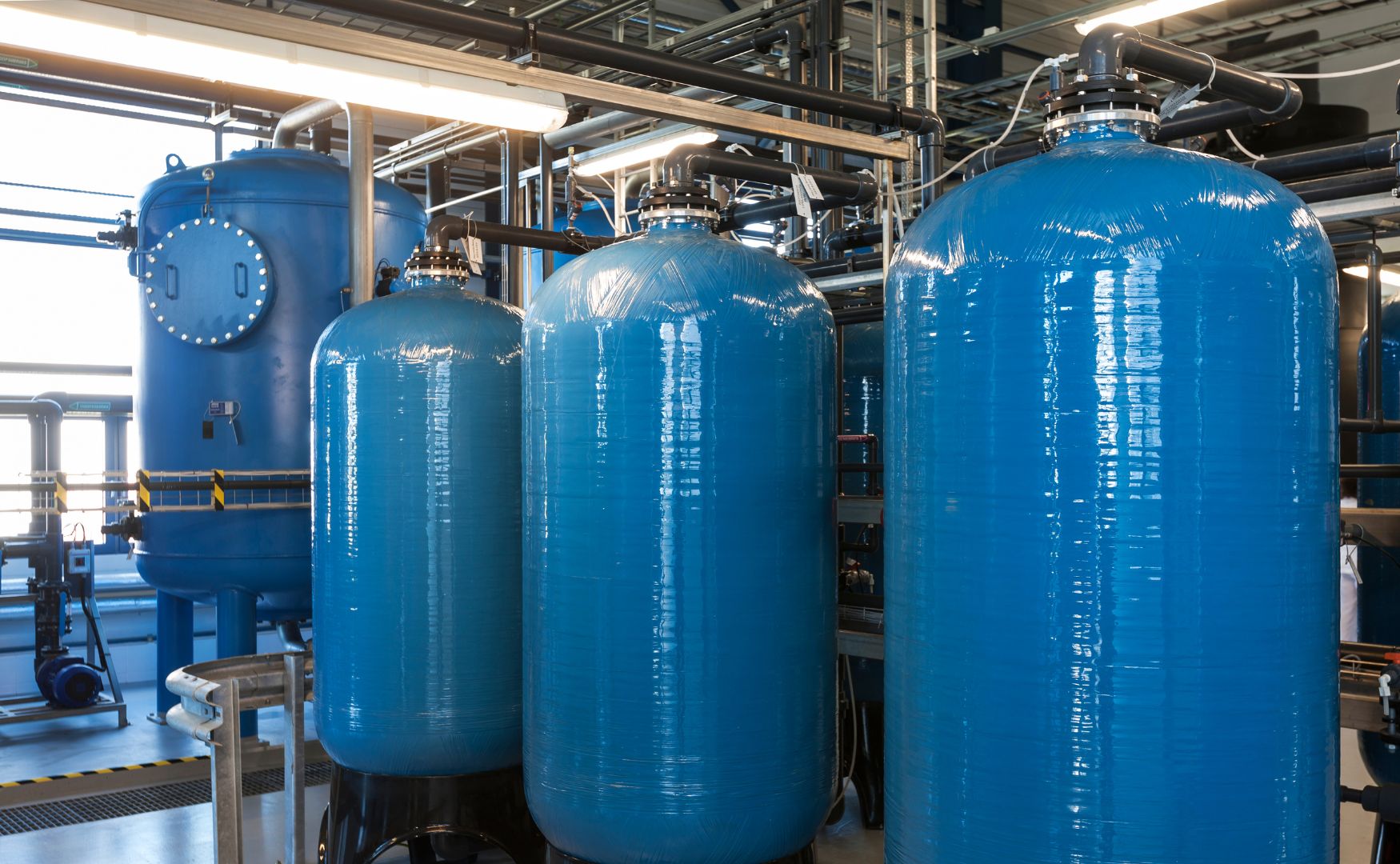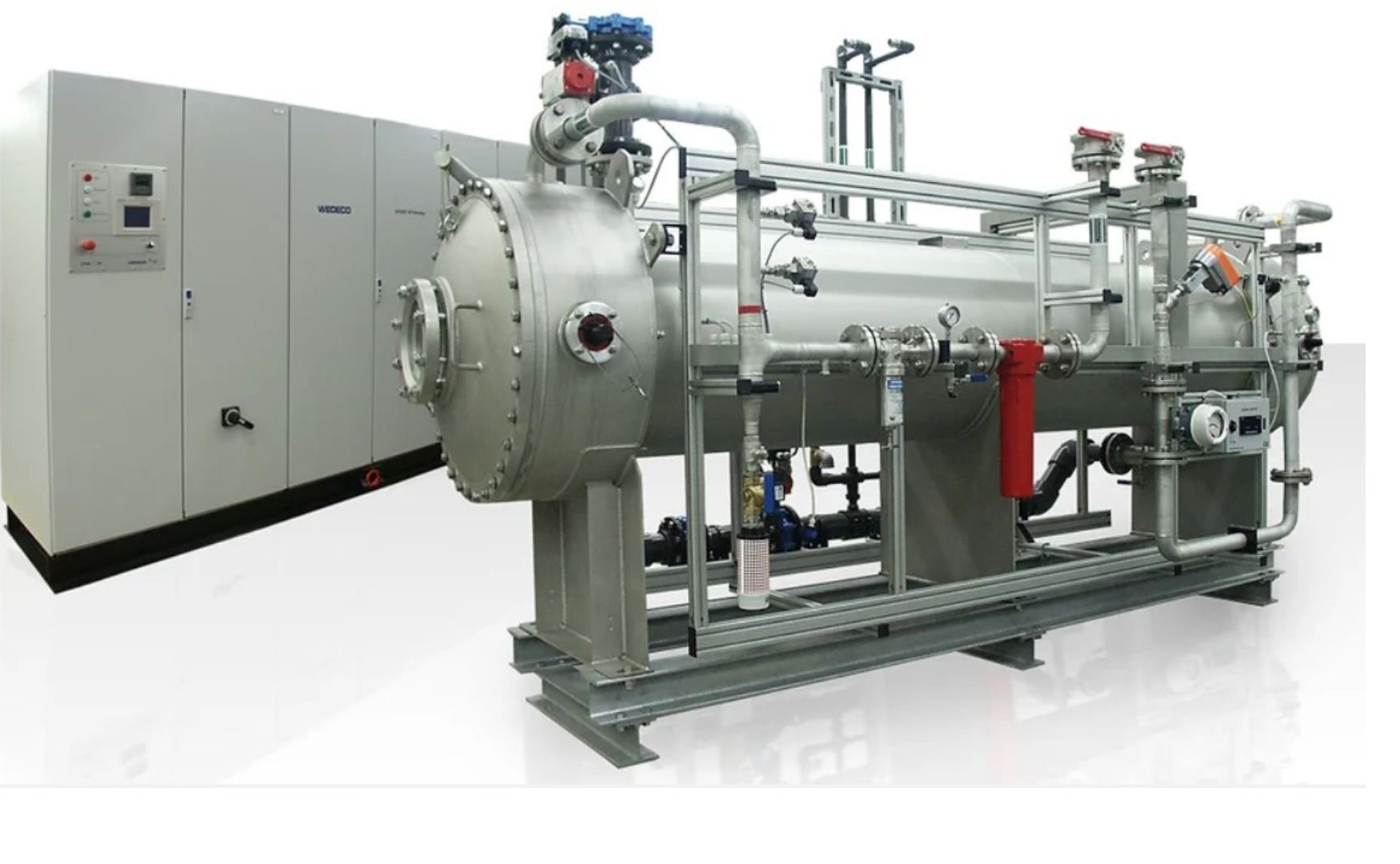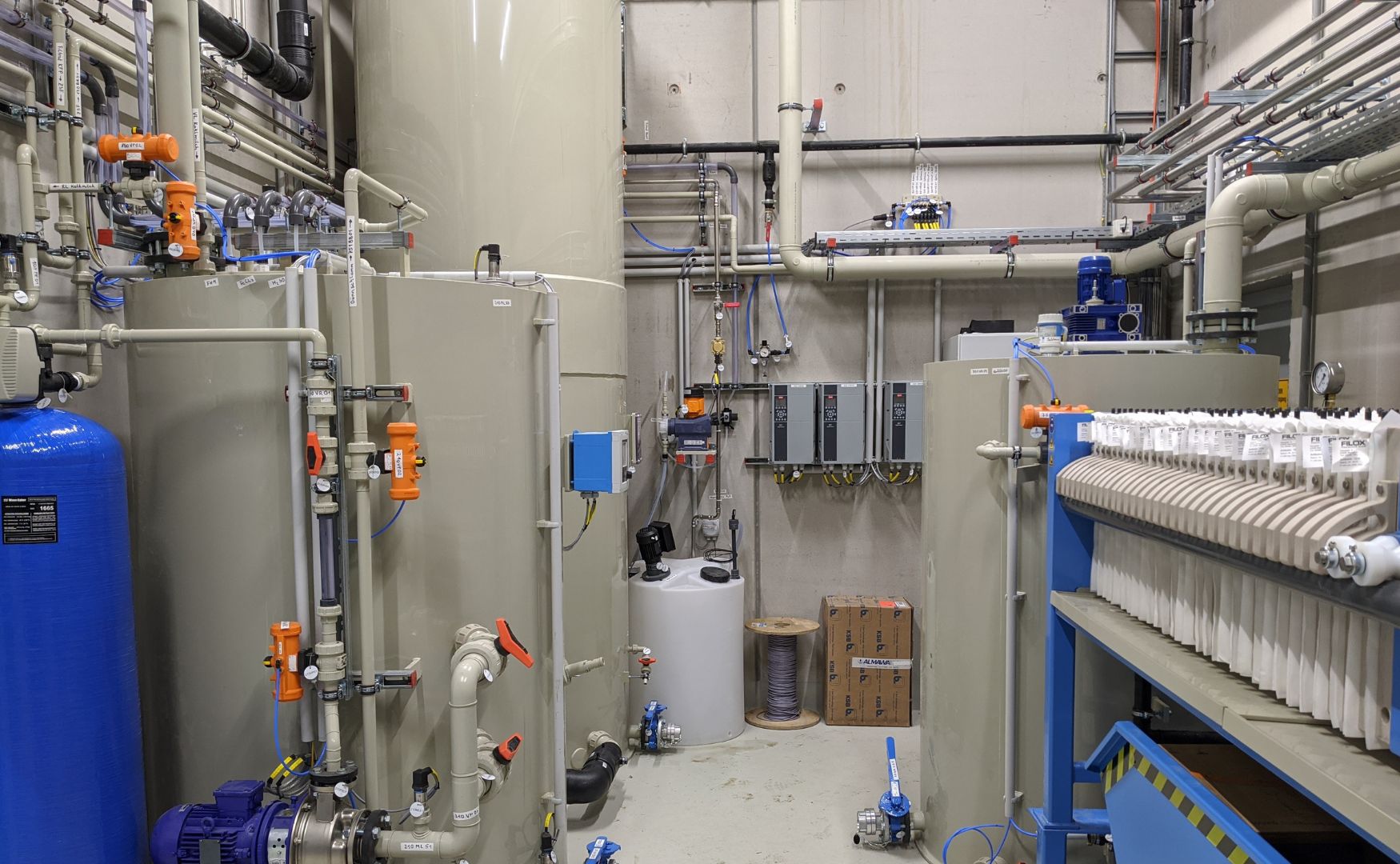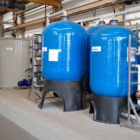AOX stands for adsorbable organically bound halogens and describes a group of organic compounds that contain halogens such as chlorine (Cl), bromine (Br) or iodine (I) and are characterized by their adsorption capacity on activated carbon. In water and wastewater treatment, AOX is an important environmental parameter, as many of these compounds are potentially toxic, bioaccumulative and poorly degradable. The monitoring of AOX is particularly important in industrial wastewater treatment, as it indicates possible contamination by halogenated organic compounds, which can be harmful to both aquatic organisms and humans.
Table of contents
Technical background
The AOX measurement is used as a sum parameter to determine the total amount of halogenated organic compounds in water or wastewater. These compounds are often formed during the industrial use of halogens or in chlorine-containing disinfection processes. Typical industries in which AOX-causing substances are released are
- Paper and pulp industry: AOX compounds are formed here through the use of chlorine bleaching processes.
- Chemical industry: In the production of solvents, pharmaceuticals or pesticides.
- Textile and leather industry: Chlorinated chemicals and bleaching agents are often used.
- Metal processing: Especially in the electroplating industry, where solvents and cleaning agents containing chlorine are used.
AOX in wastewater treatment
Reducing AOX levels in wastewater is an important goal in industrial water treatment, as many halogenated compounds are hazardous to the environment and are regulated by various environmental laws. A high AOX value in wastewater indicates the presence of toxic and often poorly degradable compounds that can have long-term effects on the aquatic ecosystem.
Typical processes for AOX reduction:
1. activated carbon filtration
Since AOX compounds are adsorbable, activated carbon is often used to remove these compounds from wastewater. Activated carbon has a high surface area which is used to adsorb organic pollutants, including AOX.

Photo: Activated carbon filter in GRP tanks(ALMA FIL AK)
2. ozonation
Ozone treatment is another effective approach to breaking down halogenated organic compounds through oxidation. Ozone can oxidize many organic compounds and thus reduce their toxicity.

Photo: AOX and trace substance elimination with the ALMA BHU OXI in stainless steel design
3. ALMA OXI Fenton
The Fenton process is a highly effective oxidation process that is particularly suitable for the reduction of halogenated organic compounds. It involves the reaction of hydrogen peroxide (H₂O₂) and an iron(II) catalyst to form highly reactive hydroxyl radicals (OH-), which are capable of oxidizing organic compounds, including AOX, and converting them into less harmful substances.
Area of application: The Fenton process is often used to treat heavily contaminated wastewater, such as that found in the paper and textile industries. It is particularly effective for organic compounds that are difficult to break down and cannot be removed by biological processes.
Advantage: The Fenton process enables a significant reduction of AOX and other organic pollutants that cannot be completely eliminated by conventional cleaning processes.

Photo: ALMA OXI Fenton wastewater treatment plant with sludge dewatering through a chamber filter press
4. precipitation and flocculation (CP systems)
Precipitation and flocculation processes are also important steps for AOX reduction in industrial wastewater. In precipitation, chemical additives, so-called precipitants, are introduced into the wastewater to convert dissolved pollutants into insoluble compounds. This is followed by flocculation, in which flocculants are added to agglomerate the resulting solids into larger particles, which can then be removed mechanically.
How it works: By adding precipitants such as aluminum or iron chlorides, the AOX-containing compounds are converted into insoluble particles. These particles are then bound into larger flocs by flocculants and can be separated from the wastewater by sedimentation or flotation.
Area of application: These processes are particularly common in the paper, chemical and metal industries, where large quantities of AOX-containing wastewater are produced. Precipitation and flocculation are simple and cost-effective processes for the pre-treatment of AOX-contaminated wastewater before it is subjected to further treatment processes.
Advantage: Precipitation and flocculation are robust processes that effectively remove AOX-contaminated compounds and convert them into solids that can be safely disposed of.

Photo: Precipitation and flocculation plant, also known as CP plant, ALMA CHEM MCW
Importance of AOX in practice
The control of AOX levels in wastewater is of great importance for many industries, as high AOX levels are strictly regulated and in many countries restricted by limit values in the wastewater discharge conditions. For companies that regularly use halogenated chemicals, it is therefore essential to implement measures to reduce AOX in order to comply with legal requirements and minimize environmental impact.
Examples from practice:
- Paper industry: In paper mills, AOX compounds are produced during bleaching processes with chlorine-containing chemicals. AOX pollution can be significantly reduced by switching to chlorine-free or low-chlorine bleaching processes.
- Electroplating plants: AOX is produced here through the use of chlorinated solvents and other halogenated chemicals. AOX pollution can be minimized by using alternative cleaning agents and treatment with activated carbon filters.
AOX analysis
The AOX content in water is determined by sampling and subsequent chemical analysis in the laboratory. The organic halogen compounds are adsorbed from the sample by activated carbon and then determined by combustion and measurement of the halogen ions. The measured value is given in µg/L or mg/L and provides an indication of the total load of halogenated organic compounds in the wastewater.
Conclusion
AOX is an important parameter in industrial wastewater treatment that indicates pollution by halogenated organic compounds. These compounds pose a potential threat to the environment, which is why their reduction is crucial. Processes such as the Fenton process, activated carbon filtration, ozonation and precipitation and flocculation processes offer effective ways to remove AOX from wastewater. Industries must comply with AOX limits to ensure environmental protection and safeguard water quality.







